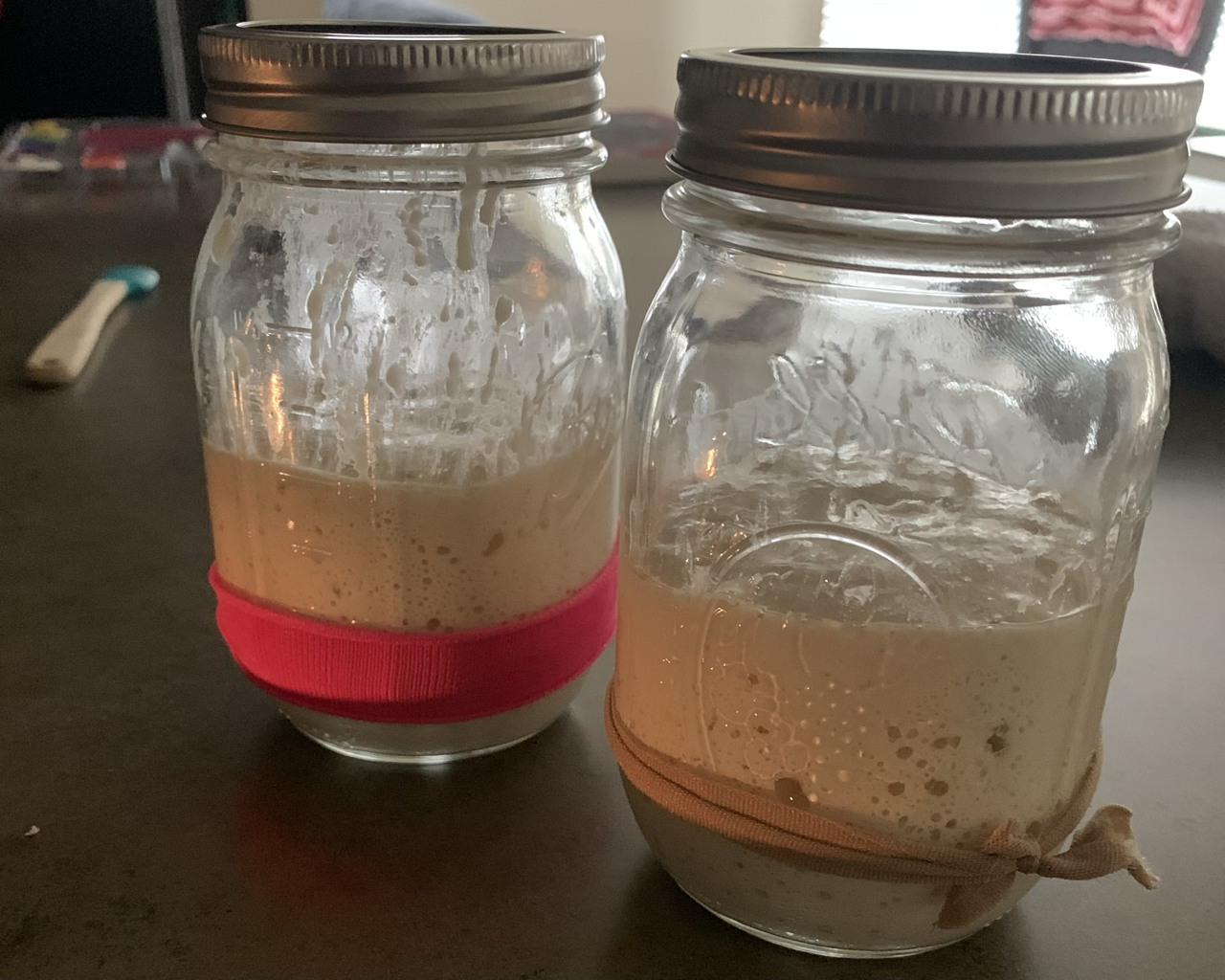The Value of Discard
how sourdough has taught me that there is value in writing anyways
The Value of Discard
 My starter, Doughtoro, in 2020
My starter, Doughtoro, in 2020
Sourdough Starter
When flour and water are left to mingle, wild yeast from the air finds a home. Care for this wild colony, domesticate it, and you bring rise to a powerful ally in the kitchen. A naturally occurring leavening agent for breads, pizzas, doughnuts; you name it!
Sourdough starter has been used for millennia, in much the same ways as today. With time and care, starter develops recipes into sturdy bakes.
Feeding the Starter
Each chef cares for their colony in their own way, I’ve even read of people taking them on walks. However a baker cares for their kitchens pet, inevitably the colony eats through its supply of long-chain carbohydrates and needs to be fed. You can’t just keep putting more flour and water in their home, they would run out of space! Not to mention the byproduct of this wild yeasts feast: ethanol. Ethanol might not kill the yeast, but it certainly doesn’t help it live.
The process of feeding the starter begins by discarding. Everyday feeding means half the starter is discarded and its mass replaced by fresh flour and water. There’s no manageable way to separate just the living yeast, so we take just half. There will certainly be viable yeast in what is discarded, which is why you can use it for a plethora of recipes like this one for crackers.
Discard
There is absolutely no shame in just throwing away sourdough discard. It’s discard. It’s necessary for the health of the colony, it’s excess for the baker. I certainly don’t bake every day so what would I do with it?
The process matters. The baker makes the discard as part of their art. There’s not a second thought.
This imports two points I want to talk about:
- We cut mercilessly for the beauty and survival of the art
- We constantly create in spite of this
Cut and Create
We cut mercilessly. We weigh, measure, and toss. We pour, mix, and stash. We take what’s left and we build onto it. We let it sit to form structure and strength enough for us to shape it in new and challenging ways.
Writing Discard
or feeding your writing/writer
Writing as an art has its related ideas, neither new nor groundbreaking. I write here merely to identify that baking bread has taught me to love this more.
Just like feeding the colony and discarding half, frequent writing practice feeds the writers soul. Whatever comes of these sessions could be discarded, or it could be kept and put to a new use. You make writing discard with
- free write sessions, letting the pen flow
- Journaling
- Perilous writing - write more or lose it all!
- writing sprints - how much can you get down in 15 minutes? 30?
Like feeding a starter this should be done regularly; daily, weekly, enough for your soul.
The more discard you make, the happier the writing spirit you care for will be, and the more active and willing it will take when you give it the ingredients for a good story: words, focus, and time.